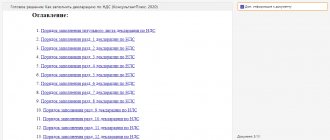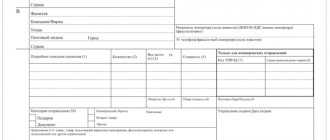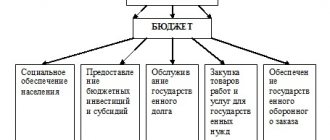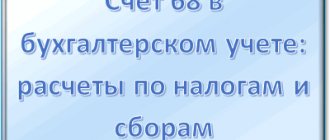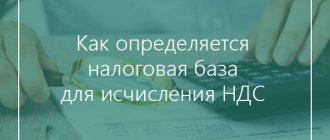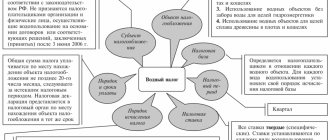Home / Taxes / What is VAT and when does it increase to 20 percent? / Rate and base
Back
Published: December 28, 2017
Reading time: 7 min
0
364
The standard VAT rate of 18% applies to most goods and services. To determine whether the products sold fall under its scope, other cases must be excluded.
- VAT and VAT rates at 10%
- VAT at 0% rate
- VAT at rates 18÷118 and 10÷110
- TN VED 2106909200
ESTIMATED VAT RATE, OR VAT ON TOP
Russian tax legislation regulating VAT provides for several tax rates. In addition to the basic tax rate, which is 18%, a reduced rate of 10% is provided, as well as a zero rate, which is also applied for export supplies. In addition, when carrying out certain types of taxable transactions, tax is calculated using the so-called calculated rate.
You will learn from this article what the estimated VAT rate is, as well as in what cases it is applied. The VAT rates are established by Article 164 of the Tax Code of the Russian Federation (hereinafter referred to as the Tax Code of the Russian Federation). Paragraph 4 of this article determines that the estimated VAT rate is a percentage of the “direct” tax rate of 10% or 18% to the tax base, taken as 100 and increased by the corresponding amount of the “direct” VAT rate. In other words, Article 164 of the Tax Code of the Russian Federation presupposes the presence of two calculated VAT rates: 10/110 or 18/118. Cases when the tax amount is calculated by the VAT taxpayer based on the estimated tax rate are also listed in paragraph 4 of Article 164 of the Tax Code of the Russian Federation. These include: - receipt of funds associated with payment for goods (work, services) provided for in Article 162 of the Tax Code of the Russian Federation; — receipt of payment, partial payment for upcoming deliveries of goods (performance of work, provision of services), transfer of property rights provided for in paragraphs 2 - 4 of Article 155 of the Tax Code of the Russian Federation; — tax withholding by tax agents in accordance with paragraphs 1 - 3 of Article 161 of the Tax Code of the Russian Federation; — calculation of tax by tax agents in accordance with paragraph 8 of Article 161 of the Tax Code of the Russian Federation; — sale of property acquired externally and accounted for tax in accordance with paragraph 3 of Article 154 of the Tax Code of the Russian Federation; — sales of agricultural products and products of their processing in accordance with paragraph 4 of Article 154 of the Tax Code of the Russian Federation; — sales of cars in accordance with paragraph 5.1 of Article 154 of the Tax Code of the Russian Federation; — sale by responsible custodians and borrowers of material assets in accordance with paragraph 11 of Article 154 of the Tax Code of the Russian Federation; — transfer of property rights in accordance with paragraphs 2 - 4 of Article 155 of the Tax Code of the Russian Federation. — other cases when, in accordance with the Tax Code of the Russian Federation, the amount of tax must be determined by calculation method.
| Note! Despite the fact that from a literal reading of paragraph 4 of Article 164 of the Tax Code of the Russian Federation it follows that the list of cases of application of the settlement rate is not closed, the majority of courts believe that this list is exhaustive and not subject to broad interpretation. |
How are invoices with estimated rates prepared?
When selling property, the price of which includes VAT, the taxpayer is obliged to use the rules for filling out an invoice, approved. by Decree of the Government of the Russian Federation dated December 26, 2011 No. 1137. At the same time:
- in gr. 5 reflects the difference between prices including tax;
- in gr. 8 the estimated tax amount is entered.
If the operation is not related to the sale of property, then in gr. 7 indicates the calculated rate used without the “%” sign (i.e. “10/110” and “18/118”).
Similar articles
- Including VAT
- How to fill out line 030 of the VAT return correctly?
- How to calculate VAT correctly - formula and example?
- Formulas for calculating VAT - which one to use?
- Property tax - rate 2018
Estimated VAT rate
This, in particular, is indicated by regional arbitrators in the Resolution of the Federal Antimonopoly Service of the Moscow District dated August 29, 2008 No. KA-A40/8063-08 in case No. A40-67808/07-109-278. The opinion of the regional court is also supported by the arbitrators of the highest court, as evidenced by the Determination of the Supreme Arbitration Court of the Russian Federation dated December 24, 2008 No. VAS-15099/08 in case No. A40-294/08-139-2.
Let us consider the cases of application of the estimated tax rate in more detail.
Receipt of funds related to payment for goods (work, services) provided for in Article 162 of the Tax Code of the Russian Federation
In accordance with paragraph 1 of Article 146 of the Tax Code of the Russian Federation, the main object of VAT taxation is the sale of goods (work, services) on the territory of the Russian Federation, as well as the transfer of property rights, both on a paid and gratuitous basis. Consequently, having sold a product (performed work, provided a service), the seller (contractor, performer) is obliged to calculate the amount of tax and pay it to the budget. To calculate the amount of tax, he needs to determine the tax base from the sale of goods (work, services). Article 153 of the Tax Code of the Russian Federation determines that the procedure for determining the tax base for VAT depends on the specifics of the sale of goods (works, services) produced by the taxpayer or purchased externally. Although, basically, sellers of goods (work, services) when selling goods (work, services) determine the tax base in accordance with paragraph 1 of Article 154 of the Tax Code of the Russian Federation, that is, based on the prices for goods (work, services) established by the contract, taking into account excise taxes (for excisable goods) and without including tax in them.
Estimated VAT rate - the value added tax rate of which VAT is calculated from the amount of income with tax included in it: 18/118 or 10/110.
The Russian Tax Code sets VAT rates, which determine the tax based on the sales price excluding tax. For example, if the VAT rate is set at 18%, then if the cost of selling a product is 100 rubles, the VAT will be 18 rubles (100 * 18%).
In some cases, legislation provides that VAT is calculated on income that already includes VAT (for example, when receiving an advance). In this case, VAT is calculated in reverse, at the calculated rate (for example, 18 / 118). For example, if VAT is calculated on income of 236 rubles including VAT, then VAT using the estimated rate will be 36 rubles (236 * 18 / 118).
Formulas used for calculus
The formula for calculation is based on the mathematical principle of finding a percentage of a number. According to current legislation, VAT is charged on the selling price of products, i.e. selling price plus tax. Thus, we obtain a formula for calculating the VAT itself and the cost of the goods taking into account the tax. Let’s assume that the general value added tax rate is 18%:
VAT = St *18 / 100% , where:
- VAT – the amount of value added tax;
- St – the cost of the goods on which VAT is charged;
- 18 – the amount of VAT on a general basis, it can be equal to 10%.
Step two: determine the cost of products including VAT:
StVAT = St + VAT , where:
- StVAT – cost of goods including VAT;
- St – cost of sales of goods excluding VAT;
- VAT is the amount of VAT charged on the product.
To simplify the calculation, you can use another method of calculating the cost of goods including VAT:
StVAT = St * 1.18
Above are the formulas for calculating value added tax when selling products. In practice, in addition to calculating tax, it is also necessary to allocate the amount of VAT when purchasing goods in order to determine the balance at the end of the reporting period, which must either be paid to the budget or received from it. If the amount of VAT paid exceeds the amount received, then the payer must receive compensation for this difference from the budget and vice versa, if the amount received exceeds the amount paid, then at the end of the month the payer must pay the balance amount to the budget. Here is the formula for calculating the amount of VAT:
VAT = StVAT /118% *18% , where:
- VAT – the amount of value added tax included in the sales price of products;
- StVAT – cost of goods including VAT;
- 118% – as a percentage, the cost of the goods including VAT;
- 18% is the VAT rate under general conditions.
To determine the cost of products without VAT, it is necessary to subtract the amount of VAT from the cost with VAT. Thus, we get the price of the product excluding VAT:
- St = StVAT – VAT, where:
- St – product cost excluding VAT;
- StVAT – cost of products including VAT;
- VAT is the amount of value added tax.
A comment
In general, there are three VAT rates – 0%, 10% and 18%. To calculate VAT, a rate is applied to the amount of the tax base (excluding VAT).
Example
The taxpayer sells goods at a cost of 50 thousand rubles excluding VAT. The tax rate for such sales is 18%.
The VAT amount will be: 9 thousand rubles (50 thousand * 18%).
For some cases (they are specified in paragraph 4 of Article 164 of the Tax Code of the Russian Federation), VAT is calculated in the reverse way - the tax is calculated from the price of goods (work, services) including VAT. So, if the tax needs to be calculated on the amount of 59 thousand including VAT, then you need to apply to this amount not a rate of 18%, but a rate of 18/118:
59 * (18/118) = 9 thousand.
What formulas are used to determine the settlement rate?
The estimated rate can be determined using simple formulas. On the one hand, it would seem simple to calculate the tax - you should apply tax rates of 10% and 18% VAT , calculating the percentage using them. Nevertheless, in accounting practice, formulas are used to determine rates, in which, in addition to percentages, you need to know the size of the tax base. The calculation is carried out using an elementary formula: the percentage value is divided by the sum of 100 and the percentage value.
In numbers these formulas look like this:
- for a 10 percent rate: 10 / (100 + 10);
- for an 18 percent rate: 18 / (100 + 18).
This procedure not only follows from accounting practice, it is also approved in paragraph 4 of Art. 164 Tax Code of the Russian Federation.
What is the difference and when to apply the VAT rate of 18% and 18%/118%?
rubles
This rate (18/118 or 10/110) is called the settlement rate. It is applied in cases where the tax, in accordance with the Tax Code of the Russian Federation (Tax Code of the Russian Federation), is calculated from the tax base already formed including VAT. There are few such cases and they are listed in paragraph 4 of Art. 164 Tax Code of the Russian Federation:
1) upon receipt of funds related to payment for goods (work, services) provided for in Art. 162 Tax Code of the Russian Federation;
2) upon receipt of advances against the upcoming delivery of goods (works, services), transfer of property rights;
3) when tax is withheld by tax agents;
4) upon the sale of property accounted for VAT in accordance with clause 3 of Art. 154 Tax Code of the Russian Federation;
5) when selling agricultural products and their processed products in accordance with clause 4 of Art. 154 Tax Code of the Russian Federation;
6) when selling cars that were purchased for resale from individuals, in accordance with clause 5.1. Art. 154 Tax Code of the Russian Federation;
7) when transferring property rights in accordance with clauses 2-4 of Art. 155 Tax Code of the Russian Federation.
Example
The taxpayer received an advance payment for the supply of goods subject to VAT at a rate of 18% in the amount of 200 thousand rubles.
The amount of VAT payable on the advance amount will be: 30,508 rubles (200 thousand * (18 / 118)).
Example
In accordance with its accounting policy, the Bank takes into account VAT in the cost of acquired property (clause 5 of Article 170 of the Tax Code of the Russian Federation). The bank purchased a fixed asset for 59 rubles (including VAT of 9 rubles) and, without putting it into operation, sold it for 118 rubles including VAT.
VAT = (118 – 59) * (18 / 118) = 9 rubles.
To calculate the VAT amount, you can use the VAT Calculator (opens in a new window in Excel).
When are settlement rates used?
Here are the circumstances when the described rates are necessarily applicable.
Cash settlements
Norms of paragraph 4 of Art. 164 of the Tax Code of the Russian Federation defines a list of circumstances when the described rates are mandatory for use.
1. When the taxpayer receives money as part of payment for transactions. The list of such operations is provided in Art. 162 of the Tax Code of the Russian Federation.
There is one peculiarity here. Its essence is that if amounts are received in addition to revenue, then they will also have to be taxed, and at the same rate as for the main transaction. For example, if the principal amount was taxed at 18%, then a settlement rate of 18/118 will be applied to all monetary additions within one contract.
2. Estimated rates are applicable in the following circumstances:
- when advance payments are received for the upcoming sale of goods or transfer of rights to property.
- when VAT is withheld by the agent.
Sale of property
The calculated rate must be used when selling movable and immovable property. This rule is contained in paragraph 3 of Art. 154 of the Tax Code of the Russian Federation and has a nuance: property taxed at this type of rate must have been previously acquired externally. Here it is possible to use the formula with both a 10 percent tax and an 18 percent tax, i.e., rates of 10/110 and 18/118 are possible.
Here is a small list of property included in this category:
- fixed assets purchased with money from budget sources;
- property transferred to the taxpayer as a gift and recorded on the balance sheet, taking into account the VAT contributed to the budget by the previous owner.
- fixed assets recorded on the balance sheet at a price including VAT;
- passenger cars, as well as minibuses, which are used for business trips and are recorded on the balance sheet at cost with this tax included.
In addition, the estimated rate should be used when assessing:
- operations during which agricultural products and their derivatives obtained as a result of processing are sold;
- cars purchased from individuals, if such cars are subsequently resold;
- transactions for the transfer of rights to property.
Let us note that the list established by law does not allow additions, i.e. it is closed.
Additionally
Value added tax (VAT) is an indirect tax established by Chapter 21 “Value Added Tax” of the Tax Code of Russia. VAT is a federal tax.
VAT calculator (opens in a new window in Excel)
Tax rate
Advance payment (advance payment)
Thus, the total amount presented to the buyer in the invoice and delivery note will be 110,000 rubles. Basic rate 0% Please note that the Tax Code establishes the grounds for exemption from VAT, defines categories of persons who are not payers of this tax, and also establishes transactions that are not subject to taxation. In this case, sales operations are carried out with a note in the documents “Without VAT”. The 0% rate is not a tax benefit and is applied by taxpayers if a number of conditions are met. Paragraph 1 of Article 164 of the Tax Code of the Russian Federation contains a list of transactions taxed at this rate.
The procedure for calculating value added tax using examples
Currently, the basic VAT rate on most goods and services is 18%.
- To determine how much money you will have to pay when purchasing a certain product, you need to add another 18% to its original cost. It will look like this - X + X*0.18 = total cost of the product including VAT, where X is the price for the product itself, and X*0.18 is the amount of VAT.
- The calculation at a rate of 20% will look similar - this is the level to which VAT will soon be increased. To calculate the amount of tax from the total amount, you will need to apply the formula: X + X*0.2 = final cost including VAT, where X is the price of the product, and X*0.2 is the required value added tax at a rate of 20%.
To make it clearer, let’s assume that the initial price of a certain product is 15,000 rubles. Value added tax will be 18% of this price - that is, 15,000 * 0.18 = 2,700 rubles. Accordingly, when purchasing this product including VAT, its price will be 15,000 + 2,700 = 17,700 rubles.
The situation with a tax rate of 20% looks the same. If the original cost is 15,000 rubles, and the tax amount is 15,000 * 0.2 = 3,000 rubles, then upon purchase you will have to pay 15,000 + 3,000 = 18,000 rubles.
VAT 0%, 10%, 18%
Attention
It must be borne in mind that the relevant products are subject to VAT at a rate of 10% only if certain categories of goods are contained in decrees of the Government of the Russian Federation, specifying certain product groups. For example: to apply a 10% rate on medicines, registration certificates for specific names are required. If the registration certificate is missing or has expired, the application of the reduced rate is unacceptable.
Info
The VAT calculation scheme when applying a tax rate of 10% will be similar to the calculation of tax at a rate of 18%. For example: a store that is engaged in the wholesale sale of children's clothing has entered into an agreement to sell products in the amount of 100,000 rubles. In this case, the tax amount will be: VAT amount = 100,000 rubles.
* 10% = 10,000 rub.
VAT amount 10 and 18 what does this mean
Tax Code of the Russian Federation (VAT rate 10.0%) in word format VAT rate 18% and 10%: how to calculate? In order to find out the amount of VAT on the sale of goods or services, you need to determine the initial tax rate. If the sale of goods occurs within the territory of the Russian Federation, 10% or 18% is used. To determine the amount of VAT, a tax in the required amount is charged on the initial cost of materials.
For example, products can be sold at a price of 100 rubles per unit. The amount of VAT in the amount of 18% is equal to 100 rubles * 18% = 18 rubles. The total cost of the goods presented to the buyer is calculated by adding the price without VAT and the amount of tax, that is, 100 rubles + 18 rubles = 118 rubles.
The procedure for calculating VAT at a rate of 10% is similar. At a price of 100 rubles, the tax amount is 10 rubles, the total cost is 110 rubles.
VAT is calculated as follows
Cost of goods including VAT: (100 + VAT rate) * VAT rate
Let's look at an example... The cost of goods in the store is 18,000 rubles.
- VAT (18%) = 18000: (100+18) * 18 = 2745 rubles 76 kopecks
- VAT (20%) = 18000: (100+20) * 20 = 3000 rubles
The formula works according to the following principle: we know that the cost of the product already includes VAT, so it is 118 or 120% of the base cost of the product. We find out what 1% is equal to and then multiply it by the VAT rate - 18 or 20%. This is how we receive VAT in ruble equivalent.
Let's consider the formation of the cost of goods including VAT and check our formula. The base cost of the product is 10,000 rubles. We need to add VAT.
18%
- 100% + 18% = 118% or 1.18
- 10,000 * 1.18 = 11,800 rubles (cost of goods including VAT)
- We calculate VAT based on the available information: 11800 – 10000 = 1800 rubles
- We check using our formula: 11800: (100+18) * 18 = 1800 rubles
20%
- 100%+20% = 120% or 1.2
- 10,000 * 1.2 = 12,000 rubles (product cost including VAT)
- 12000 – 10000 = 2000 rubles (VAT)
- According to the formula: 12000: (100+20) * 20 = 2000 rubles
If we know the base cost and the cost of the product including VAT, then it is easier to subtract the first number from the second. If only the cost of the product including VAT is known (most often this is the case), then we use the formula.
Share on social networks:
Random article
What is VAT for dummies
Estimated rates 18/118 and 10/110 Unlike the base rates, which are expressed as a percentage, the settlement rates are formulas corresponding to the base rates of 18% and 10%. Paragraph 4 of Article 164 of the Tax Code of the Russian Federation regulates situations in which the use of such rates is necessary. In practice, the most common use of settlement rates is when receiving advance payments (advance payment) for the upcoming delivery of goods, performance of work or provision of services.
Since the received payment already includes the tax amount, the following formula is used to calculate VAT: VAT amount = Advance payment amount * 18/118 (or 10/110). In other words, the calculated rates are added up according to the formulas: 18 / (100 + 18) and 10 / (100 + 10).
Tax rates VAT 18%, 10%, 0%.
When selling goods through a commission agent, attorney or agent under a commission agreement, agency agreement or agency agreement, it is also necessary to provide to the tax authorities: 1) commission agreement, authority agreement or agency agreement (copies of agreements) of the taxpayer with the commission agent, attorney or agent; 2) a contract (copy of the contract) of a person who supplies goods for export or supplies supplies on behalf of a taxpayer, with a foreign person for the supply of goods (supplies) outside the customs territory of the Customs Union and/or supplies outside Russia; 3) a bank statement (its copy), which confirms the actual receipt of proceeds from the sale of goods (supplies) to a foreign person to the account of the taxpayer or commission agent (attorney, agent) in a Russian bank.
Types of VAT.
Important
The tax agent must calculate the tax rate at 18%, withhold it from the taxpayer and transfer it to the budget. 5. When selling property that was purchased externally and which is accounted for with VAT, and when selling agricultural products and processed products in accordance with subparagraphs 3 and 4 of Article 154 of the Tax Code of the Russian Federation. The tax base is calculated in the form of the cost of goods (work, services), calculated on the basis of market prices, taking into account excise taxes (for excisable goods) and excluding VAT.
When a taxpayer receives payment or partial payment for future deliveries of goods (work, services), the tax base is calculated based on the amount of payment received, including VAT.
Who is the payer
According to Article 143 of the Tax Code of the Russian Federation, payers of value added tax are organizations and individual entrepreneurs (IP).
Also, according to this document, there is a list of persons who are exempt from paying this type of tax. The following are exempt from VAT:
- FIFA and its subsidiaries;
- Organizations and individual entrepreneurs that, based on the results of three months, have income from product sales of less than 2000.0 thousand rubles, excluding VAT for a period of 12 months. If during the grace period the payer sells excisable goods, he is deprived of the VAT benefit and pays the tax on a general basis.
- Organizations that are participants in the Skolkovo project. The benefit is valid for the period when the person is a participant in this project.
Tax rates VAT
It is important to keep in mind that, as a rule, most newspapers and magazines include various advertising publications. It should be borne in mind that if the advertising text exceeds 40% of the total content of the printed publication, then the magazine or newspaper will be recognized as advertising publications and the application of a reduced rate of 10% in this case will be unlawful. Sales of advertising periodicals are subject to VAT at the basic rate of 18%. In addition, an important nuance is the printed form of the publication. Many journals are published electronically, in which case the 18% rate will also apply; — medical goods (domestic and foreign production). These include medications and various medical products; — sale of breeding cattle, pigs, sheep, goats, horses, etc.
What is the difference and when to apply the VAT rate of 18% and 18%/118%?
These provisions do not apply to transactions for the sale of goods (work, services) that are not taxed (exempt from taxation), and in relation to goods (work, services), the place of sale of which is not the territory of Russia. The tax base does not include funds received by management organizations, homeowners' associations, housing construction, housing or other specialized consumer cooperatives that are responsible for servicing in-house engineering systems, through which utilities are supplied, for the formation of a reserve for the current and major repairs of common property in an apartment building. 2. Upon receipt of payment, partial payment for upcoming deliveries of goods (performance of work, provision of services). 3.
Category: Taxation
As noted earlier, there are two types of estimated tax rates for VAT.
The first type includes tax rates, which are defined as a percentage of the basic tax rate (10% or 18%) to the tax base, taken as 100 and increased by the corresponding tax rate (10% or 18%).
In other words, the estimated tax rates are defined as 10/110 x 100 and 18/118 x 100.
In the case of the sale of goods (works, services) at prices and tariffs that include VAT at rates of 18% or 10%, the use of estimated rates is of an auxiliary and technical nature.
However, for individual transactions, settlement rates are used as basic rates. So, according to paragraph.
The procedure for applying the estimated VAT rate 18/118
4 tbsp. 164 of the Tax Code of the Russian Federation, calculated rates are applied in the following cases.
1) Upon receipt of payment, partial payment for upcoming deliveries of goods (performance of work, provision of services), transfer of property rights provided for in paragraphs. 2-4 tbsp. 155 of the Tax Code of the Russian Federation;
2) Upon receipt of funds related to payment for goods (work, services).
Such means include:
- amounts received for goods (work, services) sold in the form of financial assistance, to replenish special-purpose funds, to increase income, or otherwise related to payment for goods (work, services) sold;
- amounts received in the form of interest (discount) on bonds and bills received as payment for sold goods (work, services), interest on a trade loan in the part exceeding the amount of interest calculated in accordance with the refinancing rates of the Central Bank of the Russian Federation in force in periods for which interest is calculated;
- the amount of insurance payments received under insurance contracts for the risk of non-fulfillment of contractual obligations by the counterparty of the insured-creditor, if the insured contractual obligations provide for the supply by the insured of goods (work, services), the sale of which is recognized as an object of taxation in accordance with Art. 146 of the Tax Code of the Russian Federation.
3) When tax is withheld by tax agents in accordance with paragraphs. 1-3 tbsp. 161 of the Tax Code of the Russian Federation.
4) When selling goods (work, services), property rights, for which the tax base is determined in the form of the difference between the sale price and acquisition costs.
This provision applies to the following cases:
- upon the sale of property subject to accounting at cost, taking into account paid VAT in the manner provided for in paragraph 3 of Art. 154 Tax Code of the Russian Federation;
- when selling agricultural products and products of their processing purchased from individuals (who are not taxpayers), according to the list approved by the Government of the Russian Federation (except for excisable goods) in accordance with clause 4 of Art. 154 Tax Code of the Russian Federation;
- when transferring property rights in the cases specified in paragraphs 2-4 of Art. 155 of the Tax Code of the Russian Federation.
The second type of settlement rates includes the rate of 15.25%, provided for in paragraph 4 of Art. 158 of the Tax Code of the Russian Federation. According to this norm, when selling an enterprise as a property complex in the consolidated invoice, the price of each type of property is taken equal to the product of its book value by the adjustment factor.
At the same time, for each type of property, the sale of which is subject to tax, in the columns “VAT rate” and “VAT amount” the estimated tax rate in the amount of 15.25 percent and the tax amount determined as corresponding to the estimated tax rate in the amount of 15.25 percent are indicated, respectively. percentage of the tax base.
